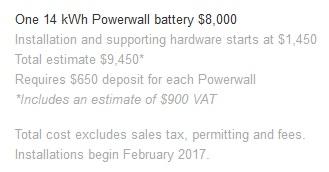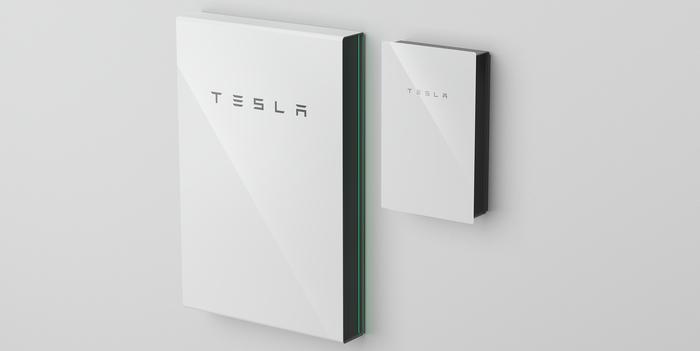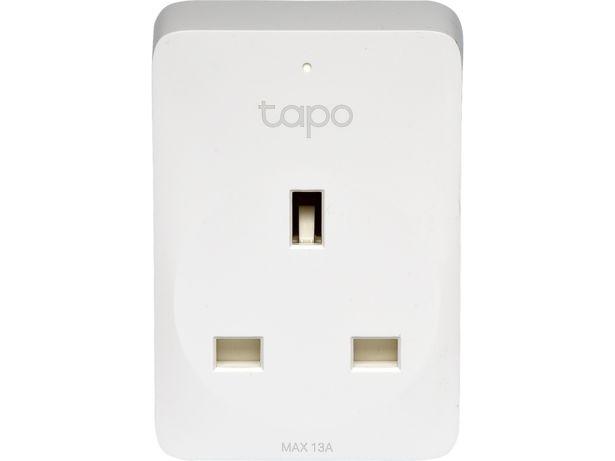The Tesla Powerwall 2: Batteries Can Finally Pay For Themselves
Elon Musk proclaims the coronation of Powerwall 2.0
Today at 12:15 Eastern Standard Time, Elon Musk announced the arrival of the Tesla Powerwall 2.
Some people were enthusiastically looking forward to this announcement, but I was not. I fully expected to be underwhelmed, and as soon as Musk finished his two or three sentences on the actual system, I felt a near fatal lack of enthusiasm sweeping over me.
From what Musk said, it appeared to simply be two original Powerwalls glued together inside a plastic case.
I almost died from lack of interest.Fortunately, I had the foresight to have a hypodermic full of adrenaline at the ready, which I was able to jab into my heart and save the Coroner from having to write “Tesla induced ennui” on my death certificate.
Because it appeared to just be two normal Powerwalls attempting to make a baby inside a refrigerator, I assumed today’s announcement was the same as the original Powerwall launch. That is, all hat and very little cattle. Or perhaps I should I say, all Tony Stark and very little Ironman?
“Well, I got this costume from Nick Fury and I don’t think he likes me very much. What’s your excuse for having a target in the centre of your chest?”
But then, an hour or so later, the technical details became available on the Australian Tesla site and I found myself actually becoming interested. It turns out that Elon Musk had left out all the important shit. It appears that the Powerwall 2 is not simply two original Powerwalls glued together, but a fundamental redesign.In fact, I became so very interested, I became excited. I almost had to take a Bex and have a nice lie down to counteract the effects of the adrenaline.
It turns out that it has a built in inverter and according to Tesla the 14 kilowatt-hour Powerwall 2 could be installed for under AUD $10,000.1
31 October Update: Tesla advise that the costs on the website do not include GST but are otherwise correct retail pricing for Australia.
Now that is a major change.If the estimated cost of installation that Tesla gave is correct, it means that, under a limited set of circumstances, battery storage could finally pay for itself for a limited number of Australians.
The Powerwall 2 Tech Specs
Here are the Powerwall 2 technical specifications I nabbed right off the Tesla Australia website:
Powerwall 2 technical details. (Image credit: Tesla)
Update (4th Nov):On Tesla’s American website the weight of the Powerwall 2 is now given as 120kg.
It Has A Built In Inverter!
The most interesting thing about the Powerwall 2, which Elon Musk completely failed to mention, is that it has an inverter built into it.I had heard rumors that it would, but I didn’t believe them on account of how it would be useful.
This is big news.It means there is no need to go through the expense of buying a multimode inverter or other device to install it and it makes installation quicker and easier and therefore cheaper.
Why Musk didn’t mention this, I don’t know.Maybe he is paid by the word and the board of directors decided they couldn’t afford to having him mention it or perhaps he is terrified of public speaking and every word is agony for him.
Battery Capacity
With 13.5 kilowatt-hours of usable storage, the Powerwall 2 has over twice the capacity of the original, which could store 6.4 kilowatt-hours when new.
It’s Too Much For Most Aussie Households Right Now
The high storage capacity of the Powerwall 2 will make it difficult for most households to use it all in an evening.The average Sydney household without gas uses an average of around 17.6 kilowatt-hours a day and perhaps half that overnight.This means only very large or very wasteful households are likely to be able to use a Powerwall 2 at full capacity for ‘solar shifting’ and so get the best possible return on the battery system.
Where the extra capacity may come in useful is to stretch out how many hours you can run in backup mode. Might be handy if any of those wind turbines conspire to blow down electricity transmission towers again.
And when Elon Musk’s master plan is complete and everyone has an electric car, the extra capacity might be useful too.
But bear in mind that being a lithium-ion battery, that capacity will soon start to diminish.After 10 years it might be down to 70% or less.
Power
Elon Musk said that, compared to the original, the Powerwall 2 has:
“More than twice as much power.”
It does not.The specs show that the Powerwall 2 is able to provide 5 kilowatts of continuous power, 7kW peak. The original Powerwall was 3.3 continuous, 5kW peak. The Powerwall 2 has 50% more continuous power than the original. This is surprisingly low considering it has twice the storage capacity.
In his announcement Musk said 7 kilowatts, but that is misleading because it is the peak power which might only be for a second or two. He appears to be mistakenly comparing the peak power of the Powerwall 2 with the continuous power of the original Powerwall. And that’s misleading.
Additional Misleading Statement!
Elon Musk said:

“You can take a four bedroom house and you can have, er, you can power the, your fridge, the sockets, and lights, ah, for a day.”
This statement is misleading because many people will, quite reasonably, conclude he is saying an entire typical large home can be completely run off a Powerwall 2 for a full 24 hours.This is not true because the average Australian and American house uses more than 13.5 kilowatt-hours in a day.Most people won’t realize that, “…your fridge, the sockets, and lights…” does not include air conditioning, heating, hot water systems, or stoves, all of which are big users of electricity.
If Elon Musk were a salesperson in Australia you could argue that he just claimed the product was suitable for a purpose that it is not.And under Australian Consumer Law, you could be entitled to a refund2.
Inverter Size
Because the Powerwall 2 can provide a continuous 5 kilowatts, we know the inverter must be 5 kilowatts or more in size.Because its peak power is 7 kilowatts perhaps that means the inverter capacity is the same, but that might actually be the peak capacity of the inverter and its actual rated capacity could be less.So all I can say for now is it’s 5 kilowatts or more.
Update (31 Oct): Tesla have advised that my assumptions about the inverter are wrong – and that they’ll disclose the full inverter spec ‘shortly’. The tension is killing me.
Size, Weight, And Style
The Powerwall 2 is 115cm tall, 75.5cm wide, and only 15.5 centimeters deep.But the bracket that holds it to the wall may mean its depth is effectively greater than that.It is significantly smaller than the original despite having more than twice the usable capacity.
At 110kg it is only 10% heavier than the original.This comes to 8.15 kilograms per kilowatt-hour, which beats the LG Chem’s RESU10 at 8.52kg/kWh.
Update (4th Nov):On Tesla’s American website the weight of the Powerwall 2 is now given as 120kg.The figures below have been adjusted to account for this.
Update (31 Oct): Tesla have advised that the Powerwall 2 has AC coupling built in. They say a fair comparison would include the DC coupled LG Resu’s weight + an AC Inverter’s weight. Fair call. The Solax SK-SU5000E Hybrid Inverter weighs 23kg, LG RESU10 weighs 75kg, total weight = 98kg. 98kg/8.8kWh = 11.14kg/kWh for the RESU+Inverter compared to 8.89 for the Tesla unit3.
As for the new design, its design is quite simple – a large, flat rectangle.I’m glad they didn’t keep their original design because to me that always looked like a coffin with the word TESLA stamped on it.While I’ve got nothing against Nikola, the thought of his ghostly remains powering my house always struck me as a bit creepy.
Indoors, Outdoors, On-Grid, Off-Grid
According to the limited information Tesla has provided, it appears the Powerwall 2 can be installed indoors or outdoors, on the ground or on a wall.When on-grid it can provide back up power during a blackout and is suitable for use off-grid.If all this is true, it makes it a very flexible system.
Warranty
The warranty is for 10 years and that’s all I can tell you at this point.I have no idea if it will be similar to the weird one the current Powerwall has, which says it doesn’t cover batteries that suffer normal degradation but doesn’t define what that is.
Because the power output of the Powerwall 2 is lower per kilowatt-hour of storage than the original, that will have a beneficial effect on the lifespan of the batteries and so its warranty may be considerably better.
Battery Deterioration
Lithium-ion batteries decay with use and over time even when not used.Based on the warranty of the original Powerwall when first released, I would roughly estimate that if the Powerwall 2 is cycled once per day, then it may retain 70% of its original capacity by the time it reaches the end of its 10 year warranty.It could be more, it could be less.The only certain thing is it will decrease.There is nothing that can stop that.
Price
The price of the Powerwall 2 is where it gets interesting.I want to be very clear about the source of the figures I am going to give you, so I stole this image from Tesla’s Australian website:
A screen capture of the Tesla Powerwall 2 price and installation estimate from Tesla’s Australian website. (Image credit: Tesla)
So, as you can see, I didn’t pull these figures out of my ass.I pulled them out of Tesla’s shiny ass.
Update (31st Oct): It turns out that Tesla’s shiny ass4 has gotten its figures wrong.I have been contacted by Tesla (the company, not the ghost) who have told me the price they gave doesn’t include GST.This means the price of the Powerwall 2 including GST is $8,800.Their estimate for the cost of installation also didn’t include GST, so that will come to $1,595.So according to Tesla, the total cost of an installed Powerall 2 will be $10,395.At the time I am writing this, they still haven’t corrected their Australian website.
This makes everything 10% worse.I have gone through my calculations below and adjusted them to take the correction into account.I haven’t removed the “Yeah, baby, yeah!” video clip, so please just imagine that Austin Powers is saying it 10% less enthusiastically.
Tesla says the Powerwall 2 could be fully installed for roughly the same cost as an original Powerwall.If Tesla’s estimate of $10,395 is correct, they have halved the installed cost per kilowatt-hour.This means Tesla has finally done it!After all this time they have finally managed to produce a battery system for around the same cost per stored kilowatt-hour as they implied the original Powerwall would cost!And here I was thinking Tesla was full of shit and would remain full of shit forever more.But it turns out they just needed a little time to work their way up to actually doing what they said they would.
The cost of the Powerwall 2 in America is $5,500 US.This means, at the current exchange rate and accounting for GST, Australians are being charged $839 more.Possibly as revenge for all the horrible, nasty, true things I’ve said about the Powerwall in the past.After all, it doesn’t cost that much to ship 110kg over from California and hedging against currency fluctuations doesn’t either.
Does It Pay For Itself?
Does the Tesla Powerwall 2 pay for itself?
Step 1:Imagine I’ve put a whole list of caveats here.Enough caveats to build an empire.
Step 2: Yes.
Oh yeah, Baby! It feels so good to have finally gotten to step two after all this time.But I have to admit, I never thought it would be with a Tesla.Not after it treated me so cruelly in the past by building up my expectations and then leaving me high and dry.Perhaps I’ll feel dirty in the morning, but right now it feels good.
The Cost Per Kilowatt-Hour
To work out the total cost per kilowatt-hour of stored electricity for the Powerwall 2 we need to estimate how long it will last, how much its capacity will degrade, how much of its degraded capacity will be used on average, the total amount of stored electricity it will provide, how much feed-in tariff will be foregone by storing electricity instead of sending it into the grid, and the cost of capital.All my estimates below are in today’s money, which saves me the trouble of having to adjust for inflation.
Estimated Lifetime
The Powerwall 2 has a 10 year warranty.If it is fully cycled once per day and decays to 70% of its original capacity by the end of its 10 year warranty period, over that time it will have stored a total of around 41,900 kilowatt-hours5If we divide Tesla’s estimate of its installed price by that amount it gives us 25 cents per kilowatt-hour.
But the Powerwall 2 is likely to keep functioning after it reaches the end of its warranty.If I assume it works for 15 years and falls to 60% of its original usable capacity in that time, it will store a total of 59,171 kilowatt-hours.
Average Amount Of Capacity Used
Most people take holidays and go out in the evening every now and then, so even people with very large electricity consumption are unlikely to always use all the stored energy in a Powerwall 2.If I assume they use an average of 90% of the battery’s usable capacity per day, then the total amount of stored electricity will come to 53,254 kilowatt-hours.Dividing the estimated cost of installation by that amount gives a cost of 20 cents per stored kilowatt-hour.
Foregone Feed-In Tariff
If a family has a six cent solar feed-in tariff, with the Powerwall 2’s efficiency of 90%, each kilowatt-hour stored is going to cost around 7 cents in forgone feed-in tariff.This brings the effective cost of stored electricity up to 27 cents a kilowatt-hour.
Cost Of Capital
If a Powerwall 2 is bought with money that is sitting in a bank earning a real return of just 1% a year, then the money lost by not having the $10,395 installation cost invested for 15 years comes to around 3 cents per stored kilowatt-hour, bringing the total cost of storage up to 30 cents a kilowatt-hour.
Where It May Pay For Itself
Looking at my electricity bill, I see in South Australia grid electricity is around 30 cents a kilowatt-hour.This means that at a total cost of 30 cents per stored kilowatt-hour the Powerwall 2 can just break even.But because the state’s average feed-in tariff is actually a couple of cents higher than the 6 cents I assumed above, it doesn’t really.However, there is a battery subsidy available in Adelaide City and North Adelaide, so it is possible for the Tesla Powerwall 2 to pay for itself, or at least pay for itself with a subsidy, in those two locations.
In other states, such as Western Australia and NSW, people on time-of-use tariffs can pay 45 cents or more for grid electricity during peak periods.Provided they can use a large portion of their stored electricity during these peak periods and also assuming the spread of battery storage doesn’t cause the cost of electricity during peak periods to fall too rapidly, then it is possible for it to pay for itself without subsidy.
A Whole List Of Caveats
So, provided the following eight conditions are met:
Then the Powerwall 2 can pay for itself.
These conditions are only going to apply for a tiny portion of the population.But if that tiny portion includes you, then go out and buy a Powerwall 2.And be sure to buy me a grape or something with the money you save.
Just be aware that at this point in time you won’t be helping the environment by buying one.
Or alternatively, you could wait and see if the Powerwall 2 announcement causes the competition to lift their game and offer something better.I have mentioned in the past that LG Chem does appear able to produce their battery storage at a much lower cost per kilowatt-hour than they sell them for…
When Can I Get One?
If you are sure you want a Tesla Powerwall 2 you can go to their Australian website and put down an 8% deposit right now.Tesla says installations will begin in February 2017, but as to when you’d actually get one,your guess is as good as mine.Hopefully you won’t have to wait too long.I presume they wouldn’t have made the announcement if they weren’t ready to roll.6



